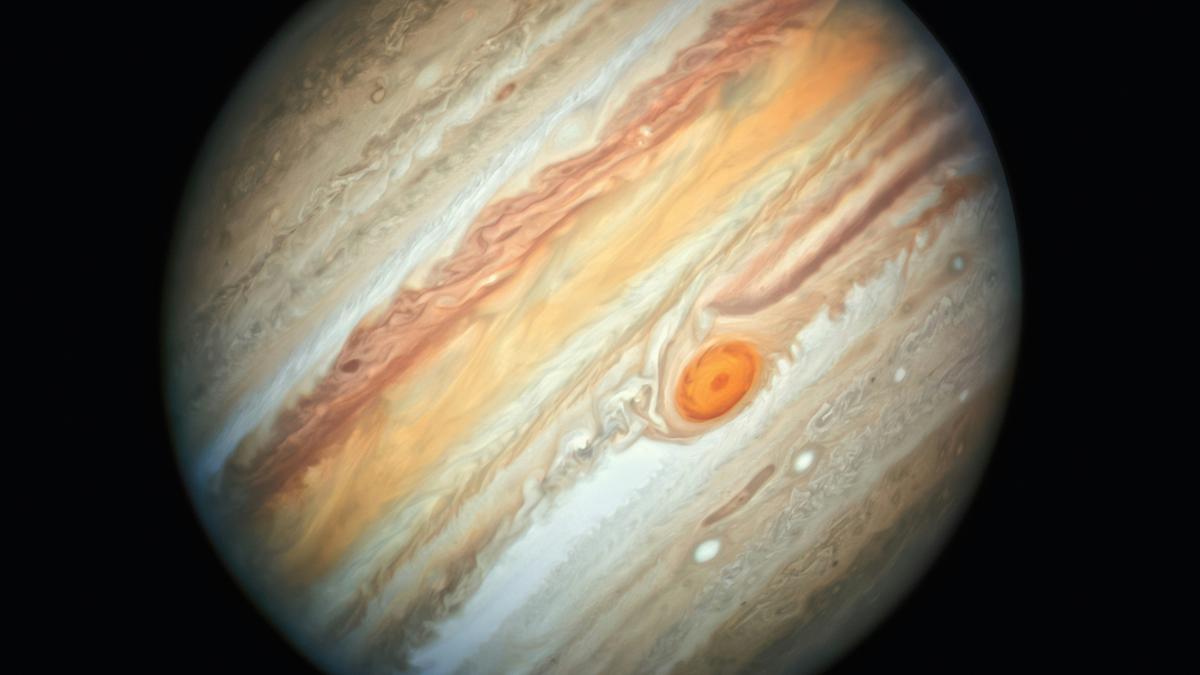Fortune must have had a pretty good time when the solar nebula exploded, tossed, roared, and turned around 4.6 billion years ago. If the slightest something hadn’t gone the way it did, we wouldn’t be here writing and studying the ‘what ifs’ and ‘what is’ of our universe. One night, like our good old Galileo, you must go starwatching. Peer up at the sky in the dark of the night before sunrise, and there you’ll see planet Jupiter, as one of the brightest stars in our sky. For all its brightness, bright Jupiter holds within itself an ancient blessing, one that is responsible for the stability of our solar system. The most powerful Jovian, a consequence of its corporeal form, Jupiter has the highest gravitational pull among all the planets in our solar system.
Bigger than pure imagination.
Gravity is a fundamental force of space-time. Generally we have learned that the heavier an object, the stronger its gravitational pull. Newton’s law of gravitation describes this force as attractive in nature as well as directly proportional to the product of the masses involved.
Now imagine, really imagine with utmost precision, how humongous a planet Jupiter is. Compared to our home (also known as Planet Earth, the fifth largest in the solar system), Jupiter is actually a titan with immense mass. The name, taken after the Roman king of Gods, befits the planet. No amount of pictures can materialise how big it is for us, so imagination is an onerous task. NASA says if it were hollow, Jupiter could fit 1000 Earths inside it. Its radius is about 10 to 11 times that of our planet.
Galileo Galilei
| Photo Credit:
Picryl
With all the enormous matter, Jupiter’s gravity can change even the orbits of asteroids. Not to mention, the planet has intense magnetic fields and so many moons (as of now, 95 moons are officially recognised), rings, and Trojan asteroids in its system!
Resembling the Sun
Since the inception of the planet, there has never been a quiet moment. 4.6 billion years ago, Jupiter was formed by gravity pulling gas into a raging orb. Truth be told, we don’t exactly know how. Made of hydrogen-helium gas in hydrostatic equilibrium, the planet has a dynamic atmosphere and resembles the Sun. Maybe, if ever nuclear fusion (what powers the Sun) was possible on Jupiter (it is not possible on Jupiter as it doesn’t meet the temperature and pressure criteria due to not enough mass), it could’ve been another Sun.
Hydrostatic equilibrium
Hydrostatic equilibrium means the balance between upward-directed pressure force and the downward-directed force of gravity. Jupiter’s hydrostatic equilibrium prevents it from collapsing under its own weight.
Enigmatic Jove, with its signature belts and zones, cyclones and anticylones, and mesmerising auroras, tells us so little. Shrouded in mystery, scientists continue to probe for better understanding this tale.
Interaction, Aid, and this Life.
If you could travel to Jupiter, you would be crushed. Crushed either by the heavy gravity or crushed by the powerful storms. Amidst all the sizzling rage and extreme phenomena, the solar system is dependent on Jupiter’s gravity. The gravitational interactions that the planets in our solar system have with one another has great effects. Newton’s law also explains that the strength of the gravitational force is inversely proportional to the square of the distance between the masses. For Jupiter, this ultimately means that it sort of becomes the guardian whose presence shaped many environments. Jupiter’s gravity influences and keeps the orbits in place. In fact, both Jupiter’s and the Sun’s gravity influences a point called the barycenter, which is the centre of mass of two or more bodies that orbit each other. Only the Jupiter-Sun barycenter lies outside the Sun’s surface. Therefore, the barycenter of our entire solar system (which is relative to the Sun) is affected and aided by Jupiter.
Studies also show that Jupiter’s gravitational influence brought many life-enabling elements to Earth during its early days. Along the way, it has also flung space materials inward as well as deflect materials outward. Long story short, here we are, living this life. Just some gravity keeping things in check.
A quick look at important Jupiter Facts
Radius – 69,911 kilometres
Gravity– 24.79 m/s²
mean distance from the Sun – 778,340,821 km (5.2 AU)
January 7, 1610 – Galileo Galilei discovers Jupiter’s moons
Published – October 17, 2025 03:48 pm IST
